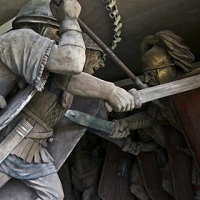
The Battle of Alesia of 52 B.C., the last major stand of the Gauls, led by Vercingetorix, against the Romans, led by Julius Caesar, is one of the most famous battles in the history of the territory that would become France. Yet until recently there was little a visitor could see, even at the very site of the battle in Burgundy, to help understand the logistics of that great confrontation.
The oppidum (or major settlement) of Alesia—situated on the heights of the commune of Alise-Sainte-Reine, 40 miles northwest of Dijon—has been the subject of nearly uninterrupted archeological digs since the mid-19th century and has unearthed tangible proof that as indeed the site of the ultimate battle fought by a coalition of Celtic tribes to liberate Gaul from the Roman conquest of the vast territory beyond the northeastern side of the Alps.
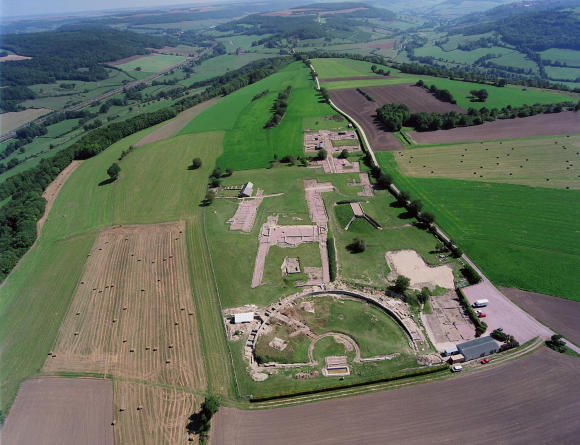
The oppodium of Alesia continued to exist as a town until well after the Roman conquest before finally being abandoned in the 5th century, so archeological digs have brought forth artifacts throughout the Gallo-Roman period. Nevertheless, it is the site’s evidence of the siege of 52 B.C. and the defeat of Vercingetorix that are the great treasure of this vast archeological site.
Vercingetorix, an Averni chieftan at the head of a disparate coalition of 80,000 Gaulish warriors, fell back to Alesia as the Romans under Julius Caesar closed in. Caught in a vice of Roman camps, including 10 to 12 legions of 4,500 men each, supported a Germanic cavalry, Vercingetorix awaited reinforcements that would arrive too late and too few. He chose to surrender in order to save his men, as is told to us in Caesar’s own first-hand testimony in his “Commentaries on the Gallic War” (Commentarii de Bello Gallico).
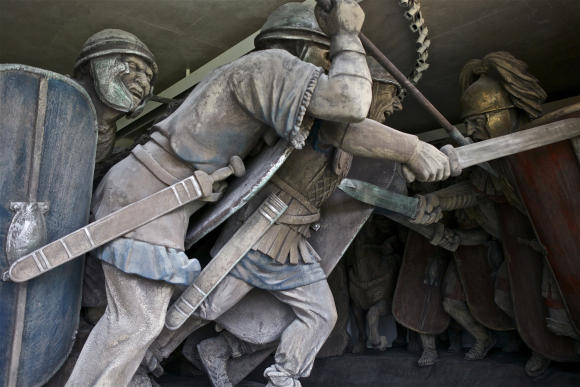
The Siege of Alesia probably lasted two months beginning at the end of August, leaving archeologists to uncover miles of fortifications along with hundreds of pieces of Gaulish money that help identify those involved in the battle and a fantastic military arsenal including helmets, shields, swords, daggers, catapult balls, etc.
Though the digs carried out during the reign of Napoleon III (1872-1870) were long discredited because they were carried out to satisfy the emperor’s own passion for history and archeology, their documentary value is of utmost importance. Research undertaken since 1905 and accelerated since 1990 with the help of aerial photography has revealed the outline of double fortifications constructed around the oppidum by Julius Caesar. This evidence confirms that the Battle of Alesia did indeed take place in Burgundy on Mount Auxois, thereby dismissing the arguments of other claimants, in particular Alaise in the region of Franche-Comté to the east of Burgundy. Nevertheless, more than two thousand years after the battle, the site has yet to reveal all of its secrets.
Until 2011, only the colossal and fanciful statue of Vercingetorix made of copper sheet by Aimé Millet and erected in 1865 stood as an emblem at the site.
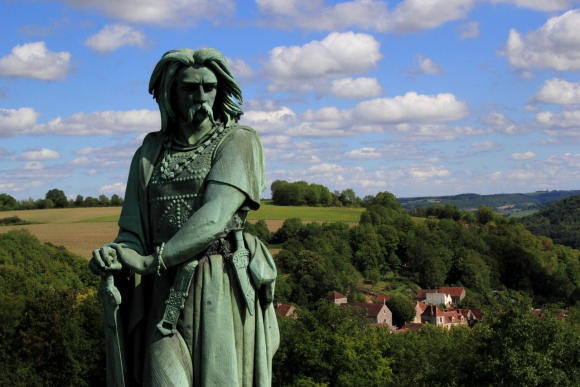
But now, since spring 2012, the MuséoParc Alésia allows visitors to dive into the heart of the battle.
The museum-park consists of a reconstitution of Roman fortifications—where reenactments and activities for all ages take place—and an “interpretation center,” a vast circular building representing the encircling of the Gauls by the Romans. The center, designed by the architect Bernard Tschumi, is a notable building of glass and concrete covered with a wooden “hairnet” (unfortunately, it misses the mark on sound insulation).
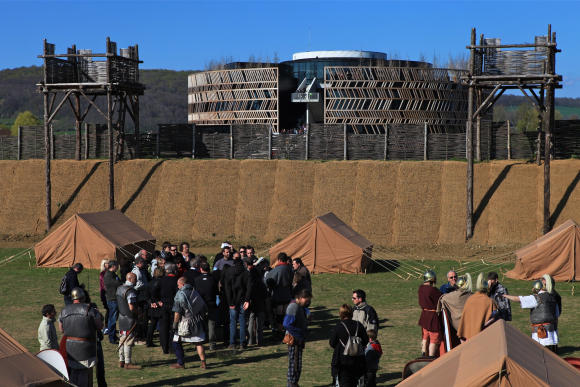
It houses a circuit outlining the historical context, the profiles of the two protagonists and the main stages in the battle. Visitors also discover remnants of the Gallo-Roman presence in the area, including clothing accessories, fibulae (brooches) of iron and bronze, pieces of helmets, shoe nails, amphorae, grindstones, horse bones, a rare fragment of a Roman goatskin tent, and other items.
A wider and more detailed view of the Gallo-Roman era will be on display when the Archeological Museum opens nearby in 2016.
© 2012, Catherine Rigollet. Translation and adaptation by Gary Lee Kraut
MuséoParc Alésia – 21150 Alise-Sainte-Reine. Tel. 03 80 96 96 23. See website for opening times and entrance fees.
The Laumes-Alésia train station is just a mile from the MuseoParc Alésia, but you’ll likely want a car to also Alesia along with other sites in the area. Bikers who don’t mind a few hills will also enjoy pedaling through this area within a radius of 8 miles in any direction.
Visitors can continue to follow in the footsteps of Gauls and Romans at three other sites in Burgundy:
– The Châtillon-sur-Seine Museum, whose centerpiece is the Treaure of Vix, found in a Celtic tomb;
– The archeological site and museum of Bibracte;
– Roman remnants at Autun, a town founded during the reign of Emperor Augustus as Augustodunum.
Catherine Rigollet is the founding editor of L’Agora des Arts, a website dedicated to the arts. As a journalist she worked for Le Point, L’Express, Le Figaro Eco and the Les Echos group before taking over the culture and exhibitions section of Air France Magazine. She is the author of a dozen books about art, history, heritage and social issues including Les Conquérantes (Nil Editions, 1996) and Les Francs Maçons (JC Lattès 1989).
This article first appeared in French in L’Agora des Arts (specifically this page) and has been translated and adapted, with permission, for France Revisited by Gary Lee Kraut.


The trip out to the Burgundy region in itself is outstanding ,
And beautiful,now with the Alesia battlefield museum
You have The biggest battlefield in ancient times
Of the Romans vs the Gauls at Alesia ,and their new
Great museum ,with a additional museum finishing in 2015.